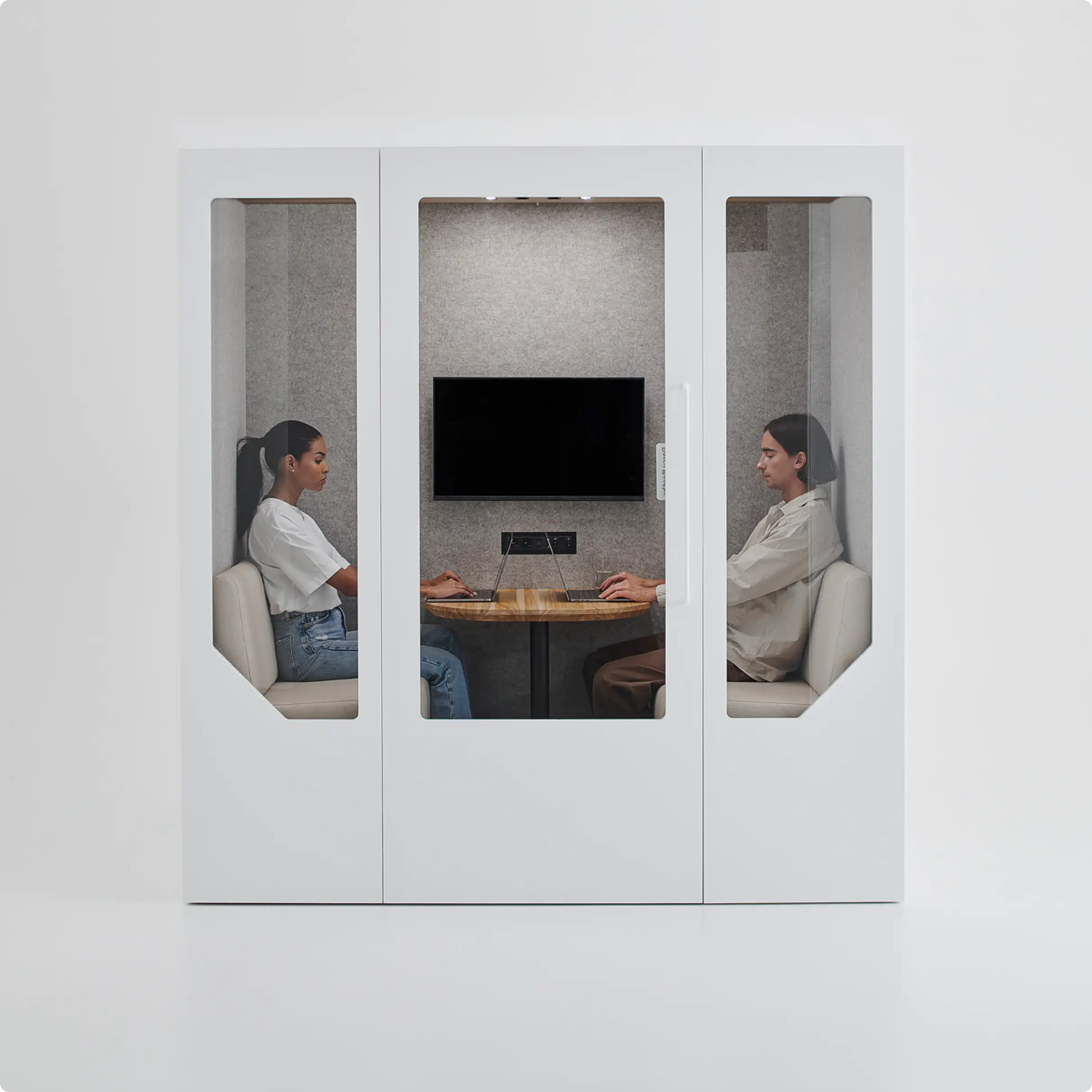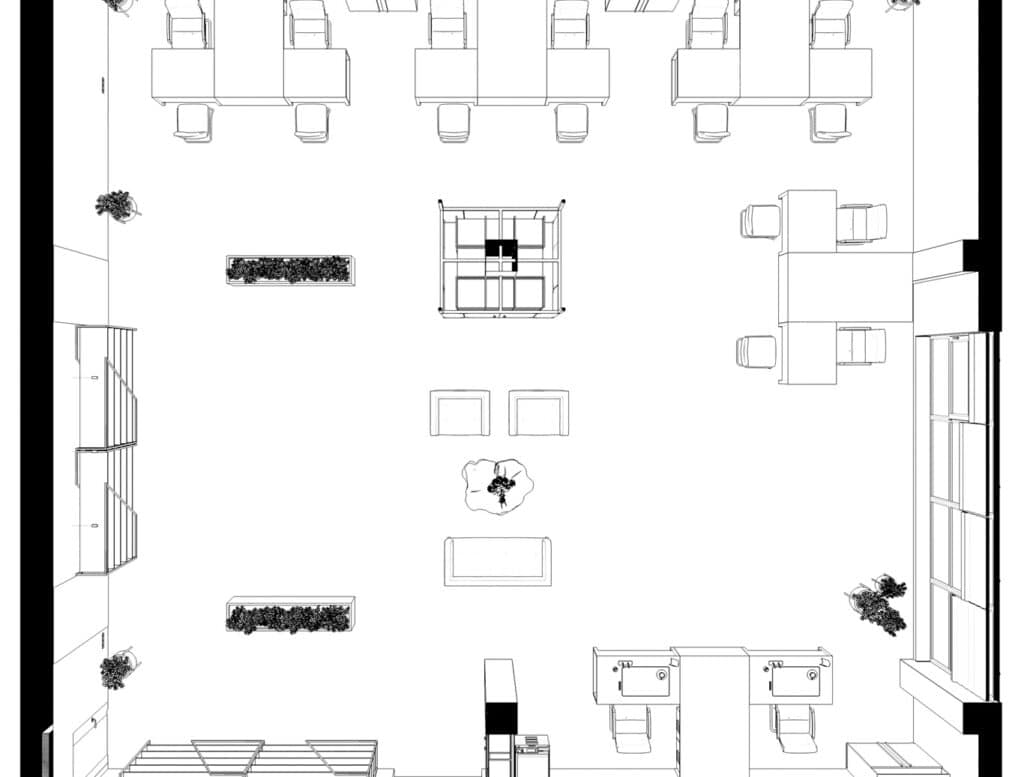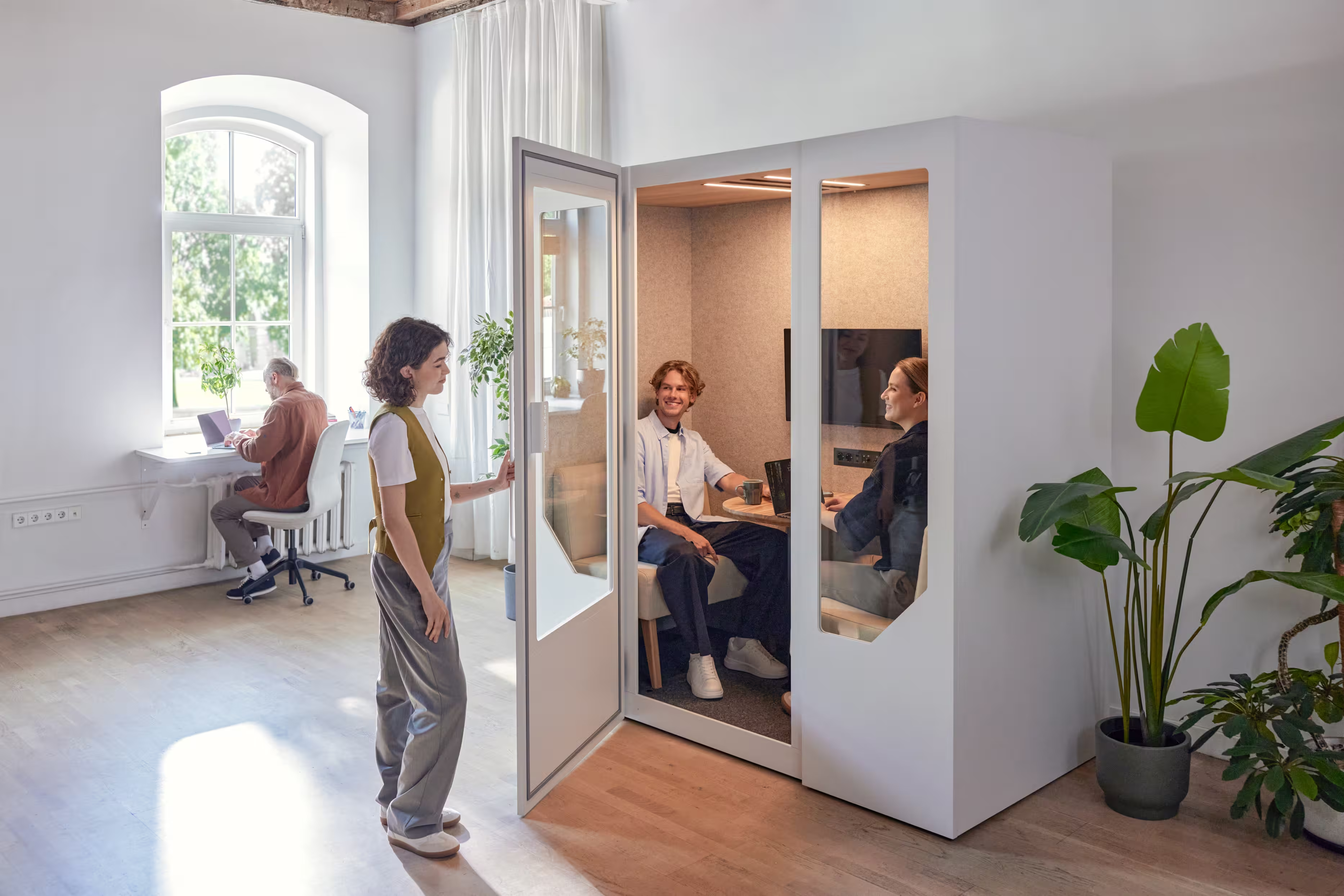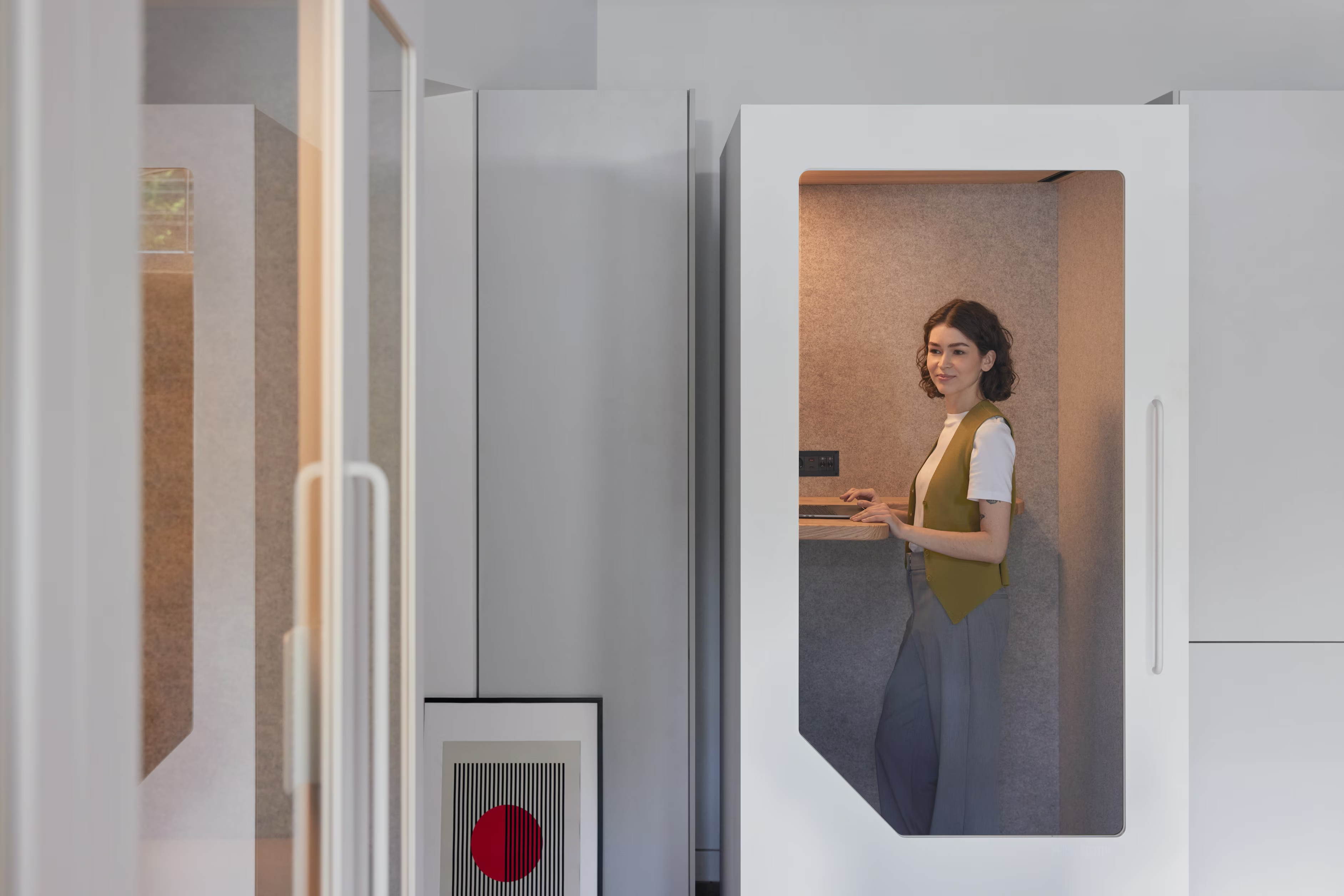“Have you got five minutes? Just need a quick chat about something...” This is how ad hoc meetings usually start. And in today’s fast-paced workplace, they happen a lot.
An ad hoc meeting can be the difference between solving a problem in minutes and letting it grow into a costly issue. These spontaneous gatherings help teams address urgent issues, make time sensitive decisions, and maintain momentum when regular meetings aren’t enough. But when they aren’t handled properly, unplanned meetings can drain focus, interrupt deep work, and eat away at productivity.
Effective ad hoc meetings require the right structure — and sometimes the right meeting space such as an office pod — to keep your team’s productivity high. Here at Persy Booths, we know all about ad hoc meetings – and can explain how to make the most of these spontaneous sessions, avoid common pitfalls, and ensure every hoc meeting achieves a desired outcome.
Key Takeaways from this Article
- Understand what an ad hoc meeting is and why it matters.
- Learn step-by-step strategies to make impromptu meetings productive.
- Discover how to balance spontaneity with structure for quick decision making.
- Explore ways to avoid interruptions and keep deep work intact.
- Get practical advice for following up and maintaining accountability.

What Is an Ad Hoc Meeting?
An ad hoc meeting is a brief meeting called at short notice to deal with urgent or unexpected matters. Unlike scheduled meetings or regular recurring meetings, ad hoc sessions are reactive — triggered by urgent problems, new developments, or critical issues that demand an immediate response.
These meetings can take place anywhere — in person or in virtual meetings with remote participants. Their spontaneous nature can make them fast-moving and effective, but also risky if not well managed. Without clear structure, most ad hoc meetings can easily spiral into unnecessary interruptions that derail other work.
When done right, however, impromptu meetings help key stakeholders align quickly, review relevant data, and reach quick decision making outcomes that move projects forward. They’re particularly useful for project updates, handling urgent issues, or confirming next steps when routine tasks have changed.
Best Practices for Running an Effective Ad Hoc Meeting
Running an effective ad hoc meeting means balancing speed with structure. You need to gather only the right people, set clear expectations, and use project management tools to keep actions accountable. Here’s how to make sure your next spontaneous meeting achieves its desired outcome.
Clarify the Meeting Purpose
Before jumping in, define a clear objective. Ask: what decision making needs to happen, or what urgent issues require an immediate response?
Clarity avoids confusion and ensures every ad hoc meeting stays productive. Even without a formal agenda, frame the meeting around the specific team members who need to contribute and the results you want to achieve. If the issue isn’t time sensitive, consider adding it to your scheduled check ins or regular meetings instead.
Invite Only the Necessary Participants
A productive ad hoc meeting relies on focus. Invite only those who are essential to the topic — the relevant team members and key stakeholders who can contribute to decision making.
Keeping the group small prevents unnecessary interruptions and improves engagement. Spontaneous meetings can be efficient when only the right people attend, but chaotic when everyone is copied in “just in case.” It’s a business meeting, not a party.
If others need to know later, capture key points and share a summary through asynchronous communication.
Set a Clear Time Limit
Ad hoc doesn’t mean endless. Set a strict time limit — ideally 15–30 minutes — to keep discussions sharp and decisions focused.
A defined timeframe keeps your ad hoc meeting efficient and prevents it from derailing deep work. It’s also easier to fit into busy schedules without disrupting routine tasks.
If you need to continue, schedule a follow-up or use project management software to assign next steps.
Use a Question-Based Agenda
Even impromptu meetings benefit from structure. A question based agenda helps focus discussion and accelerate quick decision making. A study by the CIPD (Chartered Institute of Personnel and Development) revealed that focusing on key goals was essential to the success of ad hoc meetings.
For example:
- What critical issues must we resolve today?
- What specific team members are responsible for next actions?
- What relevant data do we need before proceeding?
This simple framework helps keep your ad hoc meeting short and targeted, supporting faster decision making processes.
Capture Key Takeaways
Every successful meeting ends with clarity. Summarise key points before you close — including what was decided, who will follow up, and any follow up tasks required.
Use collaborative documents or project management tools to record notes and assign actions in real time. When meeting attendees can track progress, accountability improves and fewer details are lost.
Even for spontaneous gatherings, documenting outcomes ensures a productive ad hoc meeting rather than a wasted one.
Follow Up with Action Items
The follow up process is where effective meetings become measurable progress. Once decisions are made, assign follow up tasks immediately — ideally using your online calendar planner or project management software.
Confirm deadlines, clarify expectations, and decide how updates will be communicated — whether through asynchronous communication or a quick check-in.
Structured follow up ensures accountability and turns spontaneous meetings into actionable results. Without it, most ad hoc meetings lose impact and force people to repeat the same discussion later.
.avif)
Challenges with Ad Hoc Meetings
While ad hoc meetings are great for agility, they also pose risks. Here are the most common problems — and the right tools and techniques you need to manage them effectively.
Interruptions to Deep Work
Frequent unplanned meetings can break concentration and damage team morale. When deep work is interrupted, focus and creativity suffer. A recent study showed that interruptions such as unplanned meetings are a key cause of workplace stress.
To protect your team, designate certain zones or times for interruption-free work. Using a dedicated meeting space like a privacy booth can help balance accessibility with quiet concentration.
Encourage employees to consider whether an issue requires an immediate response — or if it can wait for regular meetings or recurring meetings.
Lack of Preparation
The spontaneous nature of ad hoc meetings often means relevant stakeholders join without full context. This leads to miscommunication or incomplete decision making.
Avoid this by sharing relevant data in advance, even if it’s just a short pre-read or collaborative document. Outline the key moments or topics to be discussed.
With a few minutes’ prep, impromptu meetings can run as smoothly as scheduled meetings, ensuring everyone understands the desired outcome.
Time Drain & Inefficient Sessions
Without a time limit or clear objectives, even a brief meeting can expand unnecessarily.
To counter this, keep your ad hoc sessions structured: focus on critical issues, summarise key points, and document follow up tasks.
Staying On-Topic
A common challenge in spontaneous meetings is scope creep. You may be tempted to discuss the latest gossip, but drifting into unrelated topics will only waste time. The solution is a comprehensive agenda or a question based agenda that keeps everyone focused on the issue at hand.
If new topics arise, park them for later. Add them to your project management tools or schedule them into regular meetings. That way, every ad hoc meeting stays efficient and aligned with your team’s productivity goals.

Conclusion
In the right setting and with the right habits, ad hoc meetings can be incredibly powerful. They let teams handle urgent issues, share project updates, and make quick decision making possible without derailing productivity.
At Persy Booths, we help teams run efficient ad hoc meetings by providing flexible, quiet spaces to hold them in. We like to think we’ve done everything possible to make it the right environment for focused discussion and productive meetings. Whether you’re tackling urgent problems or managing spontaneous gatherings, a well-designed meeting space helps keep energy high and interruptions low.
Remember the key rules, and you will get more out of those quick ad hoc meetings:
- Define clear objectives
- Invite only the right people
- Set a strict time limit
- Record key points and follow up tasks
The more structure you bring to your impromptu meetings, the better the outcomes — and the less time you’ll waste repeating discussions.








.avif)



